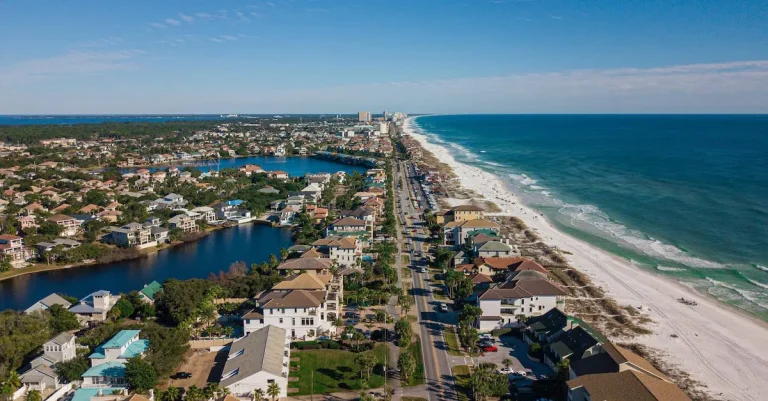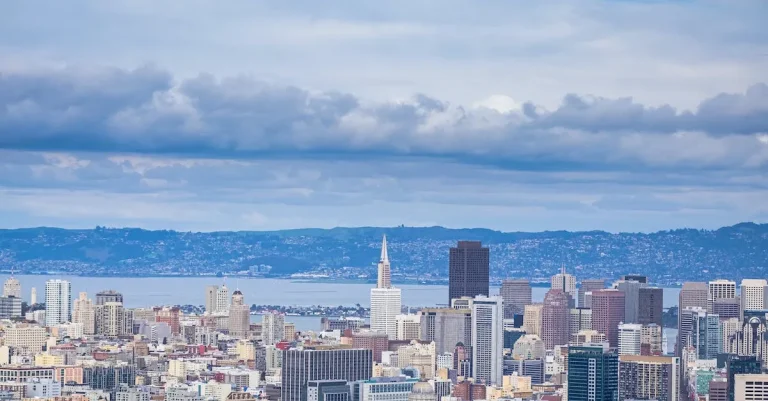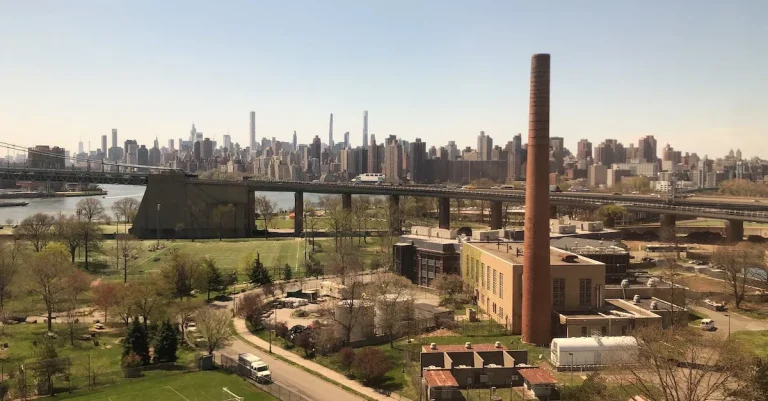Examining New York City’S Massive Subway System: Why So Many Stations?
As one of the oldest and most extensive public transit systems in the world, New York City’s subway system boasts more stations than any other system in the United States. But why exactly does New York have so many subway stations?
If you’re short on time, here’s a quick answer: New York has so many subway stations due to the city’s huge population, dense urban layout, and the system’s evolution over more than a century.
In this approximately 3000 word article, we’ll take an in-depth look at the history of New York’s subway system, its growth over time, and the transportation needs of America’s most populated city. We’ll examine how the subway mapped to New York’s changing neighborhoods, the merger of competing lines, and innovations that allowed more stations to be built. We’ll also overview some of the system’s most striking stations.
The Birth and Early Expansion of New York’s Subways
New York City’s subway system, renowned for its vast network of stations, has a fascinating history that dates back to the late 19th century. The construction of the city’s first elevated lines marked the beginning of this iconic transportation system.
First Elevated Lines
In the late 1800s, New York City faced increasing congestion on its streets, prompting the need for a more efficient mode of transportation. As a solution, the city began constructing elevated railway lines, which were built above the streets and allowed for faster travel.
The first elevated line, known as the Ninth Avenue El, opened in 1868 and connected lower Manhattan to Harlem.
These elevated lines quickly gained popularity among commuters and became a symbol of modernity and progress. They provided a convenient and affordable way to navigate the city, attracting both locals and tourists.
The success of the elevated lines paved the way for further expansion of New York’s subway system.
Early Subway Tunnel Construction
In the early 20th century, New York City’s subway system underwent a significant transformation with the construction of underground tunnels. This innovation allowed for the expansion of the subway network into areas that were previously inaccessible by elevated lines.
The Interborough Rapid Transit Company (IRT) was responsible for the construction of the city’s first underground subway line, which opened in 1904. This initial line, known as the “IRT Main Line,” ran from City Hall in Manhattan to Grand Central Terminal, encompassing a total of 28 stations.
The introduction of subway tunnels revolutionized transportation in New York City. It provided a more comfortable and efficient means of travel, shielded from the noise and congestion of the streets above.
The success of the IRT Main Line prompted the construction of additional subway lines, resulting in the rapid expansion of the subway system.
Expansion to Outer Boroughs
As New York City continued to grow, there was a need to expand the subway system to the outer boroughs. This expansion began in the early 20th century, with the construction of subway lines connecting Manhattan to Brooklyn and the Bronx.
In 1915, the Brooklyn Rapid Transit Company (BRT) opened the first subway line connecting Brooklyn and Manhattan. This line, known as the “BMT Broadway Line,” provided a crucial link between the two boroughs, facilitating the movement of people and goods.
Over the years, the subway system expanded further into the outer boroughs, reaching neighborhoods such as Queens and Staten Island. This expansion played a vital role in connecting communities and fostering economic growth in the city.
Today, New York City’s subway system boasts an extensive network of stations, serving millions of commuters and visitors each day. It remains an integral part of the city’s identity and continues to evolve and adapt to meet the transportation needs of its residents.
Merging Rival Subway Companies
Before New York City’s subway system became the extensive network we know today, it was actually a result of the merger of several rival subway companies. These companies included the Interborough Rapid Transit (IRT), the Brooklyn-Manhattan Transit (BMT), and the Independent Subway (IND) lines.
IRT, BMT and IND
The IRT was the first subway company to operate in New York City, opening its doors in 1904. The BMT, on the other hand, was established in 1913, and the IND came into existence in 1932. Each company initially operated its own separate subway lines, leading to a fragmented system with different technologies, fare structures, and station designs.
The IRT, with its distinctive mosaic tile design and elevated tracks, primarily served Manhattan and the Bronx. The BMT, known for its elegant and ornate station entrances, operated mainly in Brooklyn and Queens.
Finally, the IND, which was designed with a more modern aesthetic, served all five boroughs of New York City.
Unified Operations Under the MTA
In an effort to streamline operations and provide a more cohesive transportation system, the Metropolitan Transportation Authority (MTA) was created in 1965. The MTA took over the operations of the three subway companies and unified them under a single management structure.
Under the MTA, the subway lines were gradually integrated, allowing for easier transfers between different lines and creating a more seamless experience for commuters. This merger also led to the standardization of fare payment systems, station signage, and train schedules.
Today, the MTA operates the New York City subway system, which consists of 472 stations and over 665 miles of track. It is one of the largest and busiest subway systems in the world, serving millions of passengers each day.
Additional Station Capacity
As the city’s population grew, the need for additional station capacity became apparent. In recent years, the MTA has embarked on several station expansion projects to accommodate the increasing demand.
One notable example is the Second Avenue Subway, a project that has been under construction for decades. When completed, this new subway line will relieve congestion on the existing Lexington Avenue line and provide additional access to the East Side of Manhattan.
Furthermore, the MTA has also been working on station rehabilitation projects to modernize and improve the existing subway infrastructure. These efforts aim to enhance passenger experience, increase accessibility, and address safety concerns.
New York’s Changing Neighborhoods and Subway Evolution
New York City’s subway system is not only massive, but it is also constantly evolving to keep up with the city’s changing neighborhoods. Over the years, as different areas of the city have experienced population shifts and economic growth, the subway system has had to adapt to meet the needs of its residents.
This article will explore how the subway system has evolved to accommodate these changes, with a particular focus on the expansion of stations in developing areas.
Early Focus on Manhattan
When the New York City subway system was first built in the early 20th century, the initial focus was on serving the densely populated borough of Manhattan. As the city’s economic and cultural hub, Manhattan had the highest demand for transportation, and as a result, the majority of the early subway stations were located in this borough.
This early focus on Manhattan laid the foundation for the extensive subway system that exists today.
Accommodating Population Shifts
As the population of New York City grew and neighborhoods outside of Manhattan began to develop, the subway system had to adapt to accommodate these changes. Neighborhoods in Brooklyn, Queens, the Bronx, and Staten Island experienced significant population shifts, and new subway stations were added to serve these areas.
This expansion allowed residents to have convenient access to transportation, connecting them to job opportunities, educational institutions, and cultural attractions throughout the city.
New Stations in Developing Areas
In recent years, the focus of subway expansion has shifted towards developing areas of the city. As neighborhoods in Brooklyn, Queens, and the Bronx continue to experience rapid growth and revitalization, new subway stations have been constructed to meet the increasing demand for transportation.
These stations not only serve the residents of these neighborhoods but also attract businesses and tourists, contributing to the economic development of these areas.
For example, the opening of the Second Avenue Subway line on Manhattan’s Upper East Side has brought increased accessibility to the area, leading to a surge in real estate prices and the development of new businesses along the subway corridor.
Similarly, the extension of the 7 train to Hudson Yards in Manhattan’s West Side has transformed the once desolate area into a thriving neighborhood with residential, commercial, and cultural amenities.
Innovations Allowing More Stations
The New York City subway system is known for its vastness and complexity, with over 400 stations serving millions of passengers every day. The continuous growth and expansion of the subway system can be attributed to several innovations that have allowed for the addition of more stations.
These innovations have not only made commuting more convenient for New Yorkers but have also played a significant role in improving the overall efficiency and reliability of the subway system.
Switching to Electric Cars
One of the innovations that have contributed to the addition of more stations in the New York City subway system is the switch to electric cars. In the past, the subway system relied on steam and diesel-powered trains, which had limitations in terms of speed and distance.
However, with the introduction of electric cars, the subway system was able to expand its reach and connect previously inaccessible areas. Electric cars are not only more efficient and environmentally friendly but also allow for faster and smoother journeys, making it easier to accommodate additional stations along the subway lines.
New Tunneling Methods
The development of new tunneling methods has also played a crucial role in allowing for the construction of more subway stations. Traditional tunneling methods involved digging trenches and manually constructing tunnels, which were time-consuming and expensive.
However, advancements in tunneling technology, such as the use of tunnel boring machines (TBMs), have made it possible to excavate tunnels more efficiently and at a faster pace. TBMs can dig through different types of soil and rock, reducing the time and cost required for tunnel construction.
This has opened up opportunities for the addition of new stations in areas that were previously considered challenging or impractical to reach.
Station Design Advancements
An important aspect of adding more stations to the New York City subway system is the advancement in station design. Modern station designs prioritize passenger flow, accessibility, and safety. These advancements include the incorporation of escalators and elevators to facilitate easy access for individuals with disabilities or limited mobility.
Additionally, improved signage and wayfinding systems help passengers navigate through the stations more efficiently. By optimizing the design of stations, the subway system can accommodate more passengers and ensure a seamless commuting experience.
Notable Existing and Proposed Stations
Grand Central Terminal
One of the most iconic and bustling stations in New York City is Grand Central Terminal. Located in Midtown Manhattan, this historic station serves as a major transportation hub for commuters and tourists alike.
With its stunning architecture and bustling atmosphere, it is no wonder that Grand Central Terminal is a popular destination for both locals and visitors.
With over 44 platforms and 67 tracks, Grand Central Terminal is one of the largest train stations in the world. It serves as the terminus for several commuter lines, including the Metro-North Railroad, which connects New York City to its suburbs in the Hudson Valley and Connecticut.
If you’re visiting New York City, be sure to take a moment to explore the beauty and grandeur of Grand Central Terminal. From its iconic main concourse to its hidden secrets, such as the Whispering Gallery, this station is a must-see attraction.
City Hall Station
Another notable station in New York City is City Hall Station, located in Lower Manhattan. While this station is no longer in use, it holds a special place in the hearts of subway enthusiasts and history buffs.
City Hall Station was the original southern terminus of the first subway line in New York City, which opened in 1904. It featured stunning architecture, including Guastavino tile work and ornate chandeliers.
However, due to its low ridership and inability to accommodate longer trains, the station was closed to the public in 1945.
Despite its closure, City Hall Station still holds its charm and is occasionally open for public tours. If you’re lucky enough to visit, you’ll be able to see the beautiful architecture and get a glimpse into the early days of New York City’s subway system.
Penn Station Expansions
Penn Station, located in Midtown Manhattan, is one of the busiest train stations in the United States. It serves as a major transportation hub for Amtrak, Long Island Rail Road (LIRR), and New Jersey Transit (NJT).
In recent years, there have been ongoing discussions and proposals to expand and improve Penn Station to accommodate the growing number of commuters and alleviate congestion. These proposed expansions aim to enhance the overall passenger experience, increase capacity, and improve accessibility.
One such proposal is the Gateway Program, which aims to build new tunnels under the Hudson River and expand the capacity of Penn Station. This project, if realized, would significantly improve transportation between New York City and New Jersey.
While these expansions are still in the planning stages, they highlight the importance of continually improving and expanding New York City’s subway system to meet the needs of its growing population and ensure efficient and reliable transportation for all.
Conclusion
New York’s vast subway system, with over 470 stations, developed in tandem with the city’s growth into a dense metropolis over many decades. While the sheer number of stations may seem excessive, each station expansion catered to workers and residents as new neighborhoods emerged. Advances in tunneling, electrification and station design also allowed more stations to be fit into the system. For a city as populous and far-reaching as New York, an expansive subway network remains essential.








